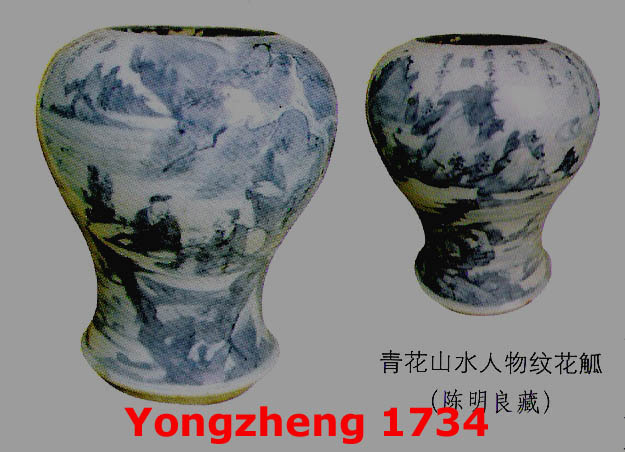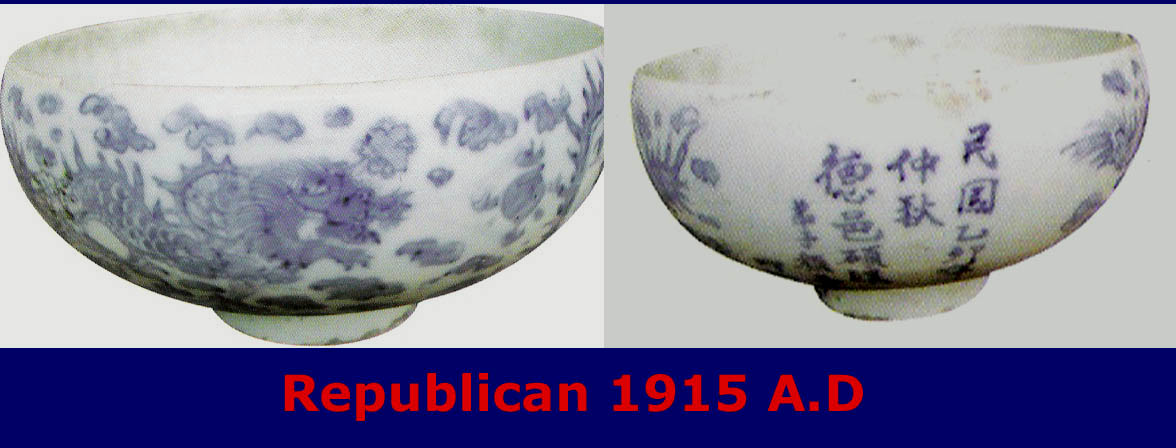|
|
|
| Two Late Ming Blanc de Chine Vases, one with blue and white floral and the other Chinese inscription. | |
Dehua Blue and White (德化青花)
Dehua, located in Fujian Province, has been a significant center for ceramic production since the Song Dynasty. During this time and extending into the late Ming period, Dehua kilns were predominantly known for producing white-glazed wares. The finest of these, characterized by their smooth, silky ivory glaze, were produced during the late Ming to Kangxi periods and were famously referred to as Blanc de Chine in Europe.
Due to the global acclaim of Blanc de Chine wares, many mistakenly believe that Dehua produced only these types of ceramics. In reality, Dehua emerged as an essential blue-and-white ceramic production hub during the 18th and 19th centuries, primarily catering to the Southeast Asian market. This fact was documented in the Xiamen Zhi (厦门志) published in 1832.
Archaeological excavations have identified over 200 operational kilns during the Qing period, some of which continued into the Republican era. A significant testament to the popularity of Dehua blue-and-white ceramics is the discovery of the Tek Sing shipwreck. The Tek Sing, carrying over 350,000 pieces of predominantly Dehua blue-and-white ceramics, departed from Xiamen for Jakarta in January 1822 but tragically sank near Belitung Island after striking a hidden reef.
Experimental production of blue-and-white wares likely began in Dehua during the late Ming period. An example is an ivory-glazed vase decorated with abstract floral scrolls. However, few blue-and-white pieces from late Ming Dehua have been discovered. Most examples involve cobalt inscriptions on traditional Blanc de Chine wares.
The transition from the Ming to the Qing Dynasty disrupted ceramic exports. Even after the Qing Regents lifted the Great Clearance policy in 1669, it took time for pottery production to recover. Initially, Blanc de Chine wares dominated, but declining quality and demand, coupled with European traders increasing their import of blue-and-white ceramics from Jingdezhen, encouraged Dehua potters to shift toward blue-and-white production. These wares primarily targeted Southeast Asian consumers who sought more affordable alternatives to Jingdezhen ceramics.
|
|
|
| Two Late Ming Blanc de Chine Vases, one with blue and white floral and the other Chinese inscription. | |
Dehua blue-and-white ceramics during the Kangxi to early Qianlong periods largely imitated Jingdezhen styles. However, Dehua wares featured thicker potting and a more opaque glaze. Early pieces often exhibited vibrant blue tones, whereas later examples had a grayish-blue hue.
One notable example is a gu vase in Singapore's Asian Civilisation Museum, attributed to the mid-17th century. Similar forms were found in the Hatcher cargo. Techniques such as shading mountains became more sophisticated during the mid-Kangxi period and remained popular on Dehua wares, even into the Qianlong and Daoguang periods. In contrast, Jingdezhen gradually moved away from these techniques after Kangxi.
|
|
|
| Late Ming Gu vase from Asian Civilisation on the left. The distinctive shading of Mountain shares much similarity with that on the Jingdezhen brushpot. | |
 |
|
|
|
|
|
Dehua vase dated to late Kangxi /Yongzheng |
|
|
|
|
| Dehua censers dated to late Kangxi/early Qianlong period | |
|
|
|
| Early Qing Dehua and Jingdezhen decoration shared much similarity as illustrated on the above examples. | |
|
|
|
|
Dehua Censer dated to AD 1748 . Similar examples with objects of antiquity are known on Jingdezhen pieces. |
|
Sherds from Dehua kilns, as documented in Dehua Minyao Blue and White by Chen Jianzhong, suggest that most surviving examples date to the Qianlong to Daoguang period. Notable features of this era's Dehua wares include:
Potting and Glaze: Thicker potting and a distinctly opaque, thick glaze compared to the thinner, more transparent Jingdezhen counterparts.
Cobalt Source: Predominantly sourced from Jinmen, often creating crawl marks and dark patches reminiscent of the "heap and pile" effect seen in early Ming blue-and-white ceramics.
Shop Marks: Many pieces featured shop or factory marks (e.g., 合记, 全记, 月记) or promotional inscriptions (e.g., 玉, 胜玉).
Calligraphic Motifs: Bold, broad strokes with calligraphic depictions of motifs, lending a lively and spontaneous appearance reminiscent of early Ming wares.
|
|
|
|
| A group of Late Qianlong to Daoguang dishes with decoration showing traces of crawled or heap and pile marks. It should also be noted that the foot of earlier pieces are higher than those dating to Daoguang. |
|
|
|
|
|
|
|
|
|
|
|
|
|
|
|
| More examples of Late Qianlong to Daoguang Dehua blue and white dishes | |
The Opium War (1840) marked the decline of Qing fortunes. The chaos of the Taiping Rebellion further devastated the economy, and ceramic exports, including Dehua wares, diminished drastically. Many blue-and-white motifs from this period were weakly executed with sketchy, disordered compositions.

The popularity of Dehua blue-and-white wares inspired production in neighboring regions:

|
|
|
|
|
|
|
|
|
|
Examples from Guangdong Raoping kiln. Similar examples have been excavated from the kiln site. |
|
|
|
|
|
An example with horses motif that is probably from Guangdong Raoping kiln |
|
Dehua blue-and-white ceramics represent a significant but often overlooked chapter in Chinese ceramic history. Their development and adaptation to market demands, particularly in Southeast Asia, showcase the resilience and ingenuity of Dehua potters. Although overshadowed by Jingdezhen, Dehua's legacy as a blue-and-white production center continues to be appreciated by collectors and historians alike.
Written by: NK Koh (18 Mar 2010), updated: 9 May 2013, edited with ChatGPT on 8 Feb 2025.